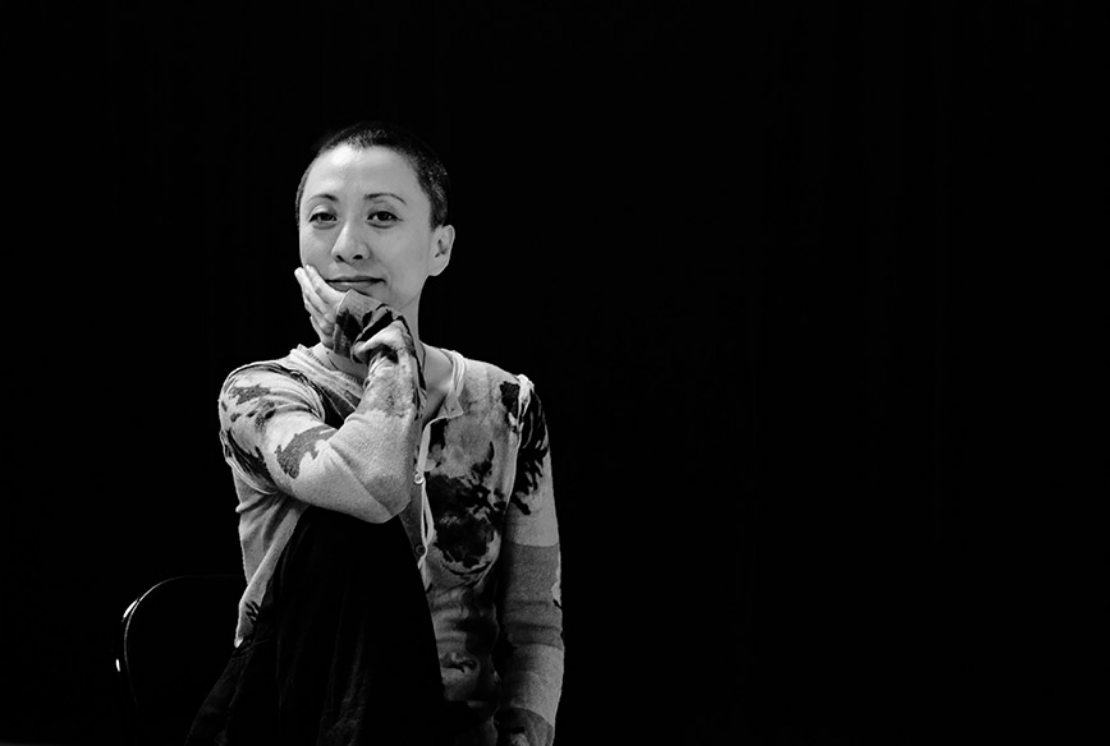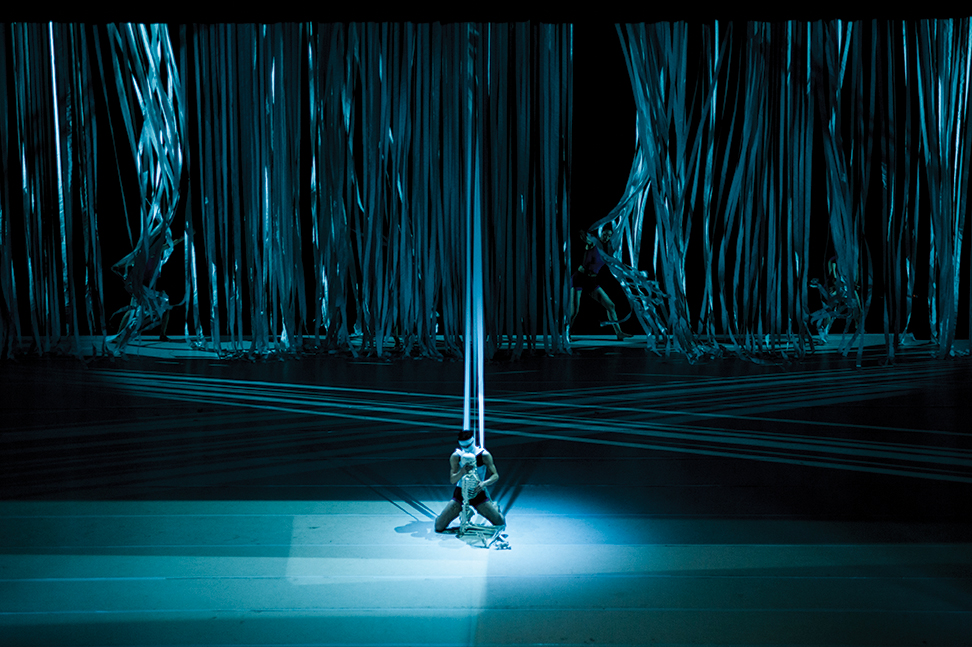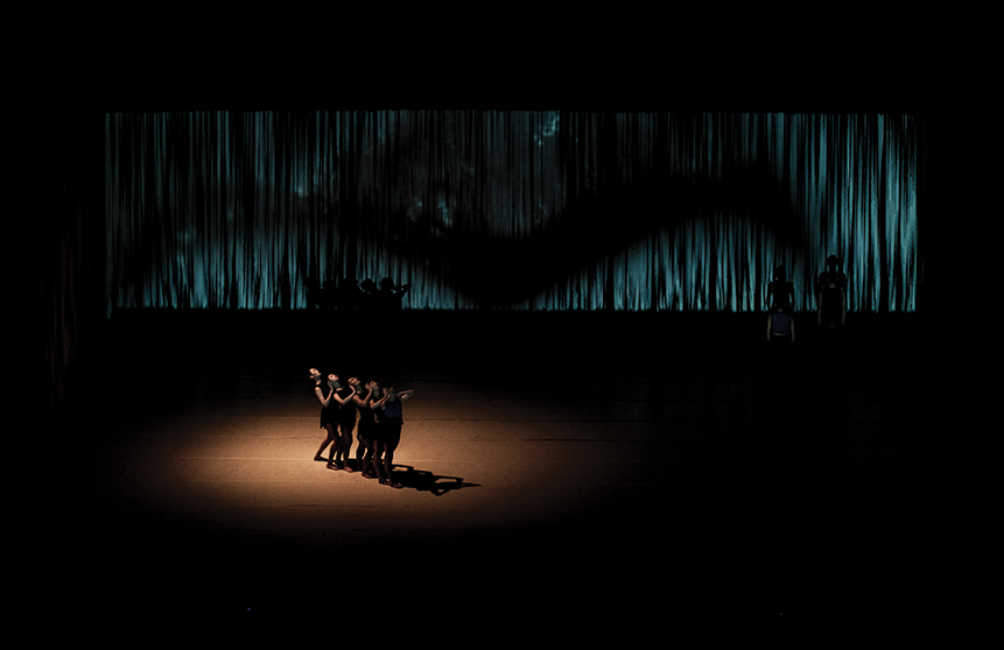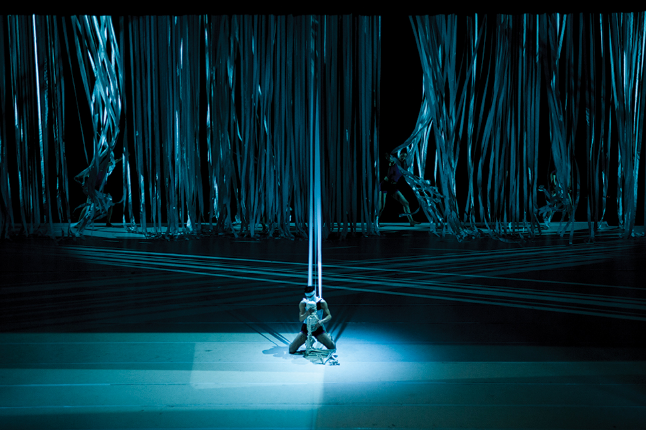Contemporary dance pioneer Hou Ying is among a strict group of choreographers who have conquered critics and audiences both at home and abroad. Anticipating her Macao debut, we coloured a brief portrait of an artist who is comfortably placed amongst China’s most sophisticated and inventive dance creators.
Hou Ying: twists and turns
of a creative mind
Those who are acquainted with the world of contemporary dance in China have certainly heard about Hou Ying. The dancer turned choreographer is a product of a generation of artists forged some decades ago, when this art form began to expand and express itself within borders.
Born in Jilin, Hou Ying’s gracious dancing ways were noticed at the young age of seven. By the time she had turned 12, the perseverance of a music teacher introduced the young girl to Jilin University of Arts where for the next seven years she would study folk dance, before taking a big step towards professionalism at the Beijing Police Art Troupe. Seeking to improve, aiming far beyond the traditional practices of martial arts and ballet, at age 23 Hou decided to move south and joined the Guangdong Modern Dance Company, the first Chinese professional dance group of its kind. The decision was born out of a renewed urge to change artistic paths, looking out for new horizons. And she would go on to explore, even further.

Refreshed by a whole new string of influences and ideas, the choreographer returned to China, making the most of her accumulated experience to found her own troupe, the Hou Ying Dance Theatre. Coming back felt like picking up a thread she had long left behind. As she once revealed, “20 years after I left, I met the very same audience on my return, and they still had a fresh memory of my last performance here”.
The company’s establishment brought with it a consistent conception and staging of bold, independent works such as Tutu, Ran, and Accident, bringing Hou wider recognition at home. This would finally place her amongst a strict group of contemporary choreographic minds that emerged across continental China, from pioneer and talk show host Jin Xing (whose work was featured in Macao both at the Arts and Music festivals), well-known Yang Liping (whose masterpiece Under Siege was staged at CCM in 2019) and Beijing based innovative dance artist Tao Ye (featured at the Macao Arts Festival back in 2016).
Such conceptual perspective is strongly conveyed on stage in Track, the piece her company is bringing to CCM in March. When asked to describe the show, Ying revealed the work explores mankind’s “unending and unquenchable desires” reflected, for example, in people’s desperate efforts to live faster and become wealthier. Feeling that dance alone could no longer fully express her ideas, the choreographer used video and stage installations, inviting musicians to create experimental music. Moving to the sound of electronic rhythms, a sleek group of dancers make sharp use of their bodies, engaging in abstract, sometimes robotic moves, vigorously exploring desire, sensuality and self-reflection. The piece sums up the endless and occasionally futile repetition of contemporary life, exposing the absurd of its unfathomable shopping and image swiping. On its background perspective, the performance is adorned by black and white projections which are at times cut by bundles of hanging stretchy fabrics, both connecting and severing the dancers with the very same world that is being staged. These material, physical bonds may be seen as an extension, a metaphorical trigger to reflection, urging the audience to weigh their real needs against excessive desires. As we shall soon find out, this might also prove to be Hou Ying’s simple and ultimate intention.


